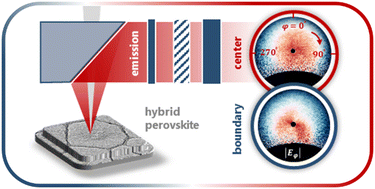Angle-resolved polarimetry of hybrid perovskite emission for photonic technologies†
Abstract
Coupling between light and matter strongly depends on the polarization of the electromagnetic field and the nature of excitations in a material. As hybrid perovskites emerge as a promising class of materials for light-based technologies such as LEDs, LASERs, and photodetectors, it is critical to understand how their microstructure changes the intrinsic properties of the photon emission process. While the majority of optical studies have focused on the spectral content, quantum efficiency and lifetimes of emission in various hybrid perovskite thin films and nanostructures, few studies have investigated other properties of the emitted photons such as polarization and emission angle. Here, we use angle-resolved cathodoluminescence microscopy to access the full polarization state of photons emitted from large-grain hybrid perovskite films with spatial resolution well below the optical diffraction limit. Mapping these Stokes parameters as a function of the angle at which the photons are emitted from the thin film surface, we reveal the effect of a grain boundary on the degree of polarization and angle at which the photons are emitted. Such studies of angle- and polarization-resolved emission at the single grain level are necessary for future development of perovskite-based flat optics, where effects of grain boundaries and interfaces need to be mitigated.



 Please wait while we load your content...
Please wait while we load your content...